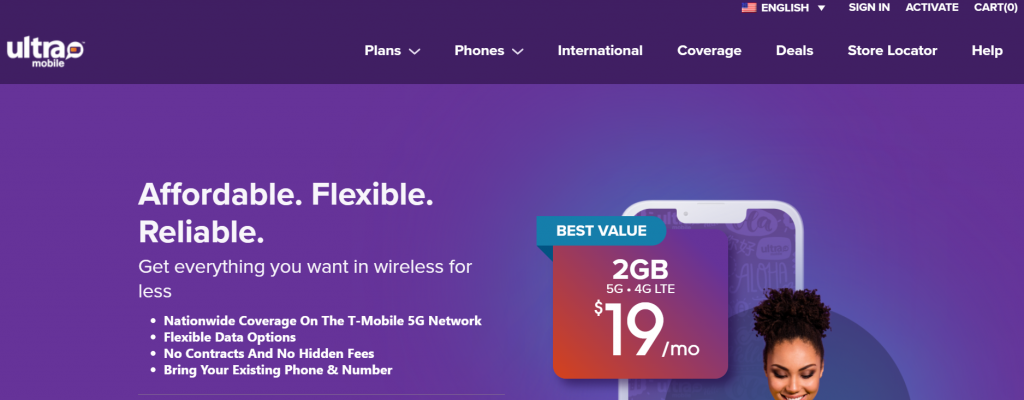The world of technology is constantly changing and evolving, and the recent introduction of 5G has ushered in a new level of connectivity. With its promise of faster speeds, lower latency and more reliable connections, it’s easy to see why so many people are excited about 5G. But before you sign up for a plan or buy a 5G device, there are some important things you need to know about this new network. In this blog post, we will take a closer look at what 5G is, how it works and what the benefits are — so that you can make the most informed decision when choosing your next phone plan.
What is 5G?
In order to appreciate what 5G offers, it’s important to understand a little about the history of wireless technology. 1G was the first generation of wireless technology and it was analog. This means that your voice was carried over radio waves. 2G was the next step and it digitalized those same radio waves so that your voice could be carried as data. 3G added even more data speed and eventually allowed us to do things like stream video. 4G LTE is what we have now and it’s pretty great, but 5G is going to blow it out of the water.
Here’s what you need to know about 5G:
What is 5G?
5G is the fifth generation of wireless technology. It promises much faster speeds than 4G LTE, low latency, and the ability to handle more devices at once.
When will 5G be available?
The rollout of 5G has already begun, but it will be a few years before it’s widely available. In the meantime, many carriers are offering “5GE” which is an enhanced version of 4G LTE that offers some of the benefits of 5G.
What are the benefits of 5G?
5GE offers faster speeds and low latency, which is ideal for activities like gaming, streaming video, and downloading large files.
How is 5G Different From 4G?
The biggest difference between 5G and 4G is speed. 5G offers much faster speeds, which means that you can download files and stream videos much quicker. Additionally, 5G has lower latency, which means that there is less of a delay when you are sending or receiving data. This is especially important for gamers and anyone who needs to send or receive large amounts of data quickly.
What are the Pros and Cons of 5G?
When it comes to 5G, there are pros and cons to consider before signing up for a plan. On the pro side, 5G is incredibly fast, with speeds that are 20 times faster than 4G LTE. This means that you can download movies, music, and files much quicker than before. Additionally, 5G has lower latency, so you won’t experience any lag when streaming video or gaming online.
On the con side, 5G is still in its early stages of development, which means there aren’t as many areas with coverage yet. Additionally, because it is a newer technology, 5G plans tend to be more expensive than 4G LTE plans. Finally, 5G requires a new type of phone that is compatible with the network.
So, when deciding whether or not to sign up for a 5G plan, weigh the pros and cons to see if it’s right for you.
How Much Does 5G Cost?
With the release of 5G, a lot of people are wondering how much it will cost to upgrade their phone and sign up for a 5G plan. The answer, unfortunately, is not a simple one. It depends on a lot of factors, including which carrier you use, what type of phone you have, and where you live.
If you’re using Verizon, for example, you’ll need to upgrade to a new 5G-compatible phone (like the Samsung Galaxy S10 5G or the Moto Z4) and sign up for one of their Unlimited plans. Prices start at $80/month for one line, so it’s not cheap. But if you’re looking to get the fastest speeds possible, it’s worth it.
AT&T’s pricing is similar – you’ll need to upgrade to a new phone and sign up for an Unlimited plan starting at $70/month. However, they also offer a cheaper option if you don’t need unlimited data: their 5G Mobile Hotspot plan starts at just $50/month for 10GB of high-speed data.
T-Mobile’s approach is different from the other two carriers. They don’t have any 5G-specific phones or plans yet – instead, they’re using their existing LTE network to deliver 5G speeds. That means that if you have a T-Mobile phone that supports LTE (like the Galaxy S9), you can already get 5G speeds in select markets without
When Is 5G Available In My Area?
When it comes to 5G, there’s a lot of hype but not a lot of information. So, when is 5G available in your area? The answer is: it depends.
There are two types of 5G: low-band and high-band. Low-band 5G offers slower speeds but wider coverage, while high-band 5G is much faster but has limited range. As of right now, low-band 5G is the only type that’s widely available.
If you’re looking for 5G service, check with your carrier to see if they offer it in your area. AT&T, T-Mobile, and Verizon all offer 5G service in select markets. Sprint’s 5G network is currently live in nine markets: Atlanta, Chicago, Dallas-Fort Worth, Houston, Kansas City, Los Angeles, New York City, Phoenix, and Washington D.C.
While 5G is still in its early stages, it’s expected to eventually replace 4G LTE as the new standard for wireless connectivity. So even if it’s not available in your area yet, it likely will be soon.
Get The Plan With Ultra mobile Website
If you’re looking for a comprehensive guide to understanding G’s mobile plans, look no further! In this article, we’ll break down everything you need to know about G in order to make an informed decision about which plan is right for you.
G is a leading provider of unlimited mobile data plans, and for good reason – their plans are some of the most affordable and flexible on the market. Whether you’re a light data user or a power user, G has a plan that will fit your needs. And best of all, G doesn’t require a credit check, so anyone can sign up for a plan!
Ultra makes wireless accessible and affordable for all, with plans that keep you connected and coverage you can trust on the T-Mobile 5G Network. Whether you need unlimited talk, text and data or a minimal data plan, Ultra Mobile has the right plan for you.
Here’s what you need to know about G before signing up for a plan:
1. Get The Plan With Ultra mobile Website
2. How Much Data Do You Need?
3. What Other Features Are Included?
4. How Much Does it Cost?









